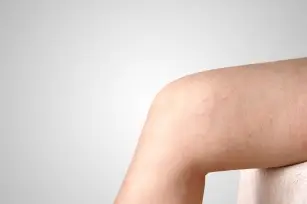
They are both an aesthetic and health problem. Genetic conditions are a common cause of their formation. Many people believe that varicose veins cannot be removed, because even after surgical removal, they will return anyway. However, this is not always the case, and varicose veins can be fought. It is worth trying – especially to prevent their rapid spread.
This problem affects four times more women than men, because the walls of the veins in women are much more delicate and thin. Contrary to appearances, venous diseases can appear very early – in any period of life, both in 18-year-olds and in elderly people. It is true that the peak of this type of disease is usually recorded in people in their fifties, but despite this, cases of varicose veins occurring in very young patients are increasingly reported.
People who lead a sedentary or standing lifestyle, i.e. people who work at a desk or in a standing position, e.g. as hairdressers, are most at risk.
Where do varicose veins come from?
The formation of varicose veins is associated with insufficiency of venous valves, thrombosis or impaired structure of blood vessels. Early symptoms of varicose veins are:
- Visible veins that look like they are just under the skin. They are noticeable mainly on the inner thighs and calves. In the first stage of the disease, they are not palpable and thickened.
- Having trouble staying in one place.
- Wet feet, evening swelling of the feet.
- The feeling of heavy legs.
- Calf pain in the evenings, sometimes cramps.
- Swelling of the legs around the ankles.
- Constantly shuffling in place, crossing legs, moving feet while sitting.
Six proven ways to get rid of varicose veins (or prevent the development of the disease):
- Eat plenty of vitamin C and rutin – these types of compounds improve circulation and have an anti-inflammatory effect. Vitamin C is found in broccoli, kiwi, tomatoes, red peppers, and rutin in onions, carrots, lemons and buckwheat. Drinking nettle or dandelion tea also works well.
- Avoid being overweight or lose weight – the additional load on the legs accelerates the appearance of varicose veins. Don’t let your weight get too high.
- Remember to move – swimming, walking or cycling are your allies. When standing or sitting for a long time, remember to move your feet from time to time to stimulate circulation.
- Avoid heels and tight clothes – unfortunately, fashion is fashion, but shoes with high heels and high uppers increase the likelihood of varicose veins. Tight clothing compressing the waist or groin area also impedes blood flow. Avoid tubes.
- Lift your feet – put your feet above thigh level for at least 15 minutes a day. Especially when they hurt. This will allow the blood to flow towards the heart.
- massage yourself – massaging from feet to thighs will reduce swelling. In order to enhance the effects, you can lubricate your legs before starting the massage with a special preparation to strengthen blood vessels.









